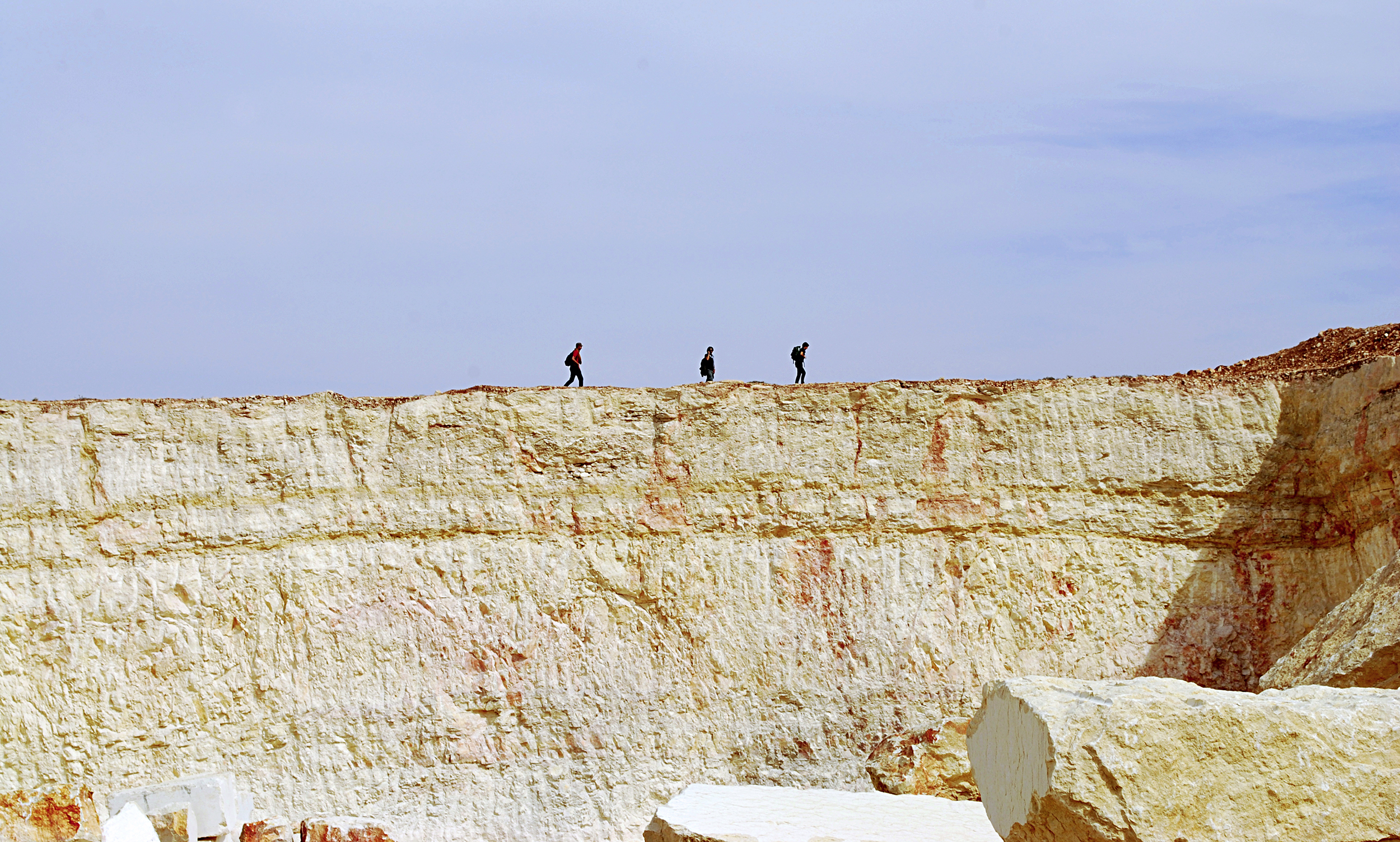The symbol photograph of In Between Camps piece, taken by Matteo Guidi in 2012, has been selected as the cover image for the newly released The Challenges of Mobility Research, Debates and Practices (Editor(s): Herman Bashiron Mendolicchio, Serene Huleileh / Cambridge Scholars Publishing, 2015).
About the photograph
The origins of The Artist and the Stone lie in In Between Camps, a two-day walk-piece realized in Palestine, following the ground-embedded stone traces of an ancient Roman aqueduct, built to carry water from a Herodian pool (located in the Hebron area) to the ancient city of Jerusalem. The simple daily practice of ‘taking a stroll’ was extended over an expansive and contended territory as an immersive experience concerning geography, history and politics. This search for the ruins from a prior era of colonization was interrupted by the appearance of a giant quarry, literally carving out all layers of and references to geography and history.
It was during this walk that Matteo Guidi and Giuliana Racco first encountered stone quarries in the West Bank and it was also through this experience that the relationship with Saleh Khannah (The Artist and the Stone‘s local coordinator) and Ibrahim Jawabreh (the artist) was consolidated. The walk also resulted in the video In Between Camps and the publication Relations. The Artist and the Stone emerged one year later, when Ibrahim Jawabreh expressed his desire to Matteo Guidi to travel from Palestine to Spain in order to develop his artistic practice.
About the book
We work, travel, learn, seek, reflect, take part in dialogues, meet, discuss, and try to create a convivial atmosphere: this is the life story of the Arab Education Forum, and this is also how the story of this book started: from two seminars held three years apart, the idea of this book arose from an evident shortage of literature and knowledge about mobility as a tool for learning, dialogue, and artistic exchange and as a new-old paradigm around the Mediterranean basin.
But what kind of knowledge, ideas and visions, do mobility practices generate? How does mobility, and its restrictions, produce and contrast the transformation and alteration of geographies, borders, territories, cities and conflict areas? How do mobility practices contribute to creating new narratives, cultural representations and counter-representations? How could cultural mobility contribute to a responsible and sustainable transformation of society? What are the impacts of mobility? What can be learned through the analysis of the relationship between mobility, art, education, intercultural dialogue, human rights and volunteerism?
The present volume covers and reflects on these several crucial issues that shape the contemporary age, and provides some new and fresh perspectives about the challenges of mobility.


